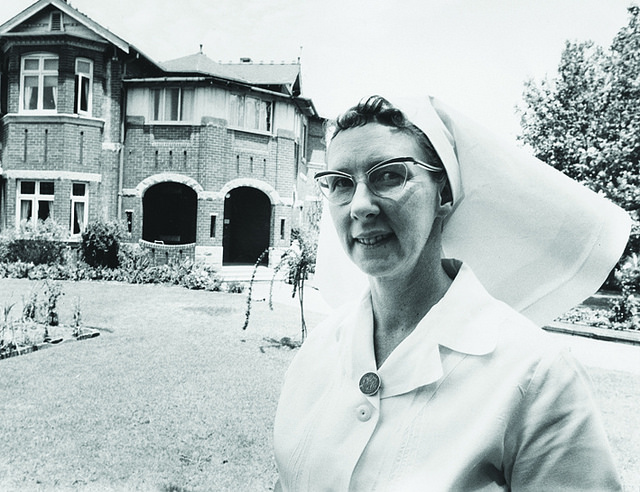
Carpenter House opens
At the special meeting of Tresillian Council held on July 30, 1940, the proposition for the Society to take over the administration of the Carpenter Mothercraft Home at Wollstonecraft was approved on behalf of the Hospital’s Commission.
The Federal Government had appealed for donations towards the King George V and Queen Mary Jubilee Fund, and Sir Walter and Lady Carpenter gave their beautiful house and grounds in Shirley Road, Wollstonecraft, together with a substantial sum for any necessary alterations. From the hands of the Federal Government, the gift passed to the State Government, which asked the Royal Society for the Welfare of Mothers and Babies to undertake the task of running it.
The Commission agreed to underwrite the cost of maintenance and upkeep of the home. Because of this arrangement, Carpenter House did not have a separate Committee of Management. Its activities were directly administered by the General Council.
The Sydney Morning Herald reported on 3rd December, 1940 that ‘the need for rest homes to which mothers can take their newborn babies before returning to a round of household duties is a long-felt one’. On 14th December, Mrs. H. P. FitzSimons, wife of the State Minister for Health, officially opened the Carpenter Mothercraft Home in 25 Shirley Road, Wollstonecraft that soon became known as ‘Carpenter House’.
The Herald described the building as ‘attractive – a large garden in which flowers, trees, and shrubs have managed to survive the drought; two grass tennis courts, a rose arbor, an
aviary, and a conservatory. The matron, Miss Sheila Carmichael, and Sister Tolcher have been in occupation for several weeks, and are hard at work marking towels and linen. Matron was able to choose the furnishings for the patients and nurses’ quarters, and is proud of the result’.
‘Babies are also to have their own food room which has been designed with an eye to showing mothers how food can be prepared and kept under much the same conditions as in their homes. “It’s no use telling them to use refrigerators if they don’t own refrigerators!”, matron pointed out. The food room has a miniature gas stove, ample cupboard space, and a gauze-sided safe through which air can flow from out of doors’.
‘The parquet-floored ballroom has been turned into a mothers’ dining-room, with three round tables and cream and brown curtains, and provision has been made for winter warmth. The “examination room” near the front door is equipped with a steriliser, wash-basin, and desk. Garages have been transformed into comfortable quarters for the domestic staff; there is a laundry, drying-room, and hot-water service’.
‘Matron has her own sitting-room upstairs, with a glassed-in balcony-bedroom attached, and the rest of the nursing staff will also be accommodated upstairs. Their chief pride is what they call “the Woolcott-Forbes bathroom” which has a green bath set in green tiles, a green wash-basin, and cream tiled walls with a green dado’. The original bathroom can still be found at the Wollstonecraft Centre today.
Premature babies
Before the setting up of Neonatal Intensive Care Units (NICU) Tresillian cared for many premature infants at all Centres. They were dressed in a nightie structured out of a roll of cotton wool and placed in a bassinette lined with brown paper to keep them warm. Back then, a treatment for babies that stopped breathing was a drop of brandy, something that would definitely not be advocated today!
